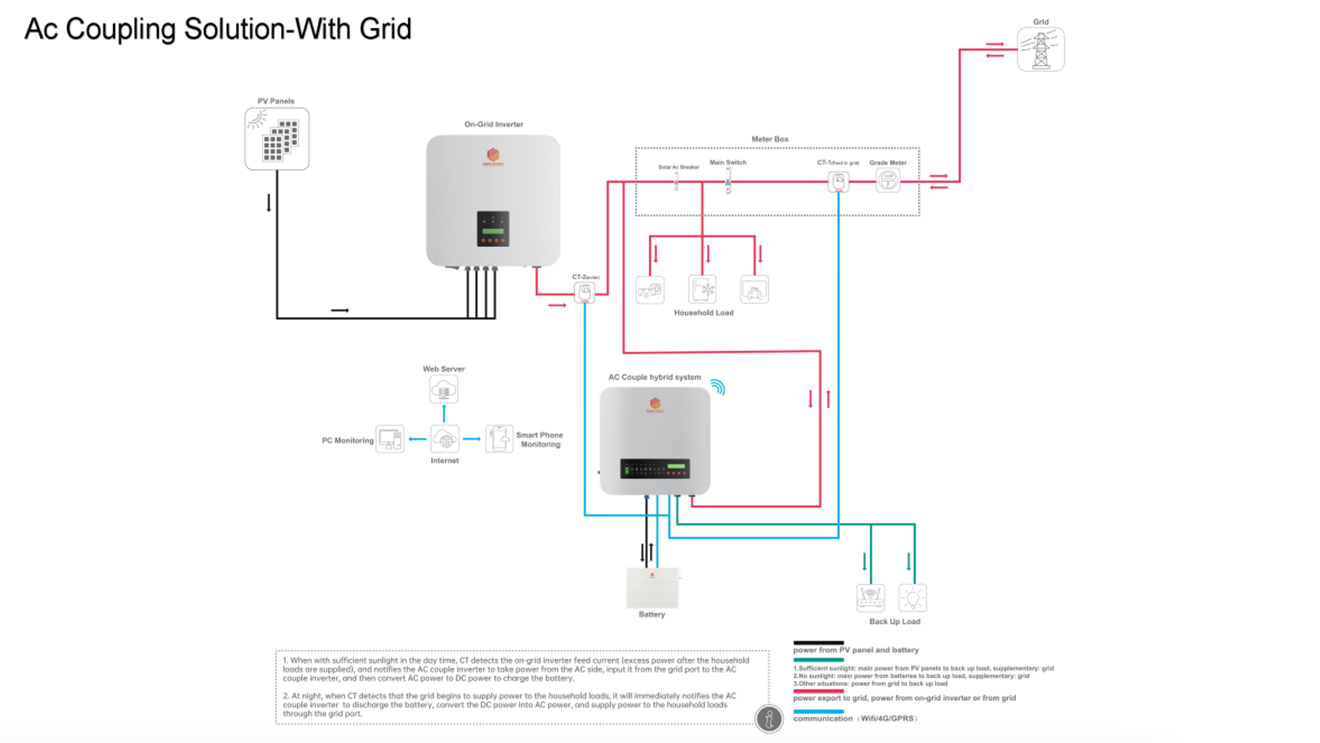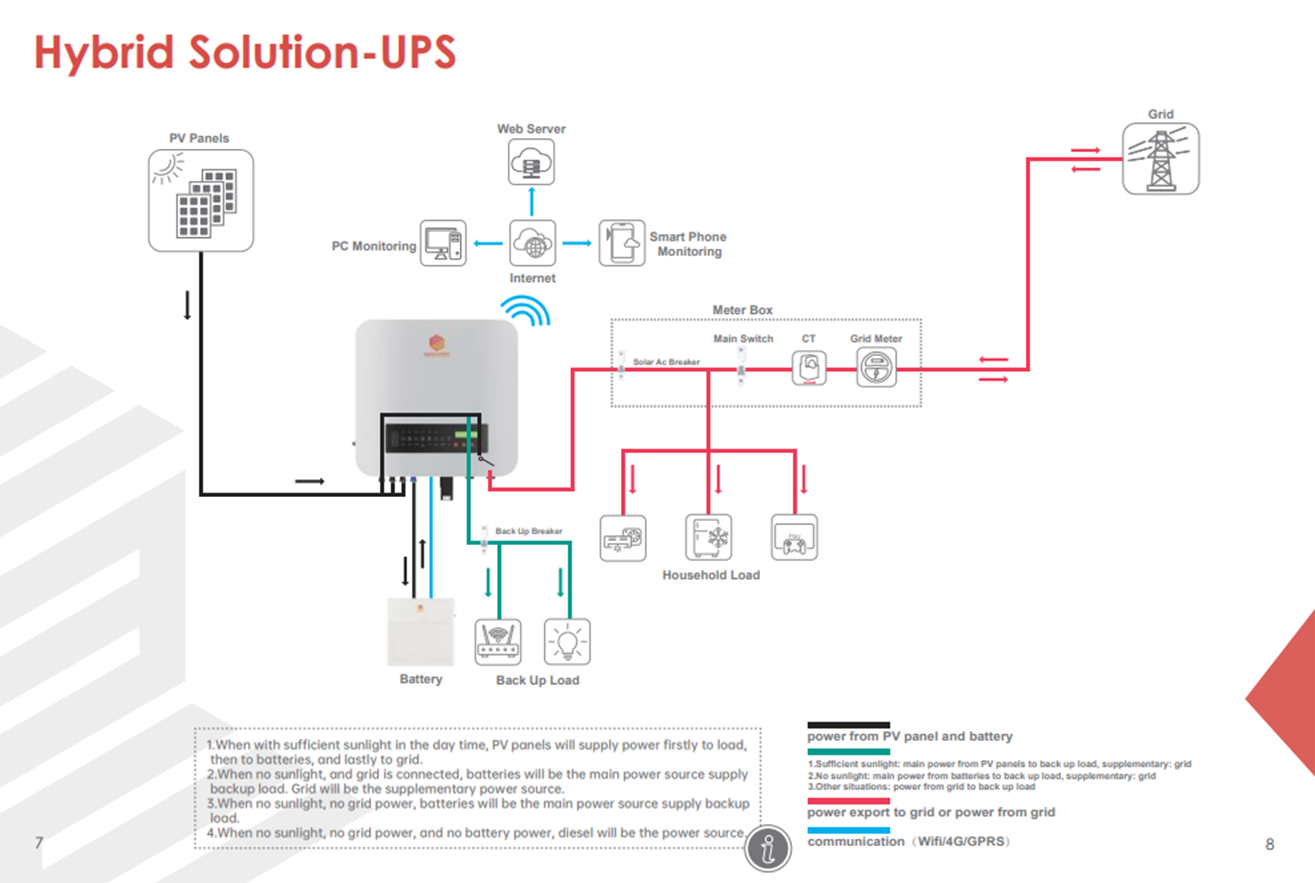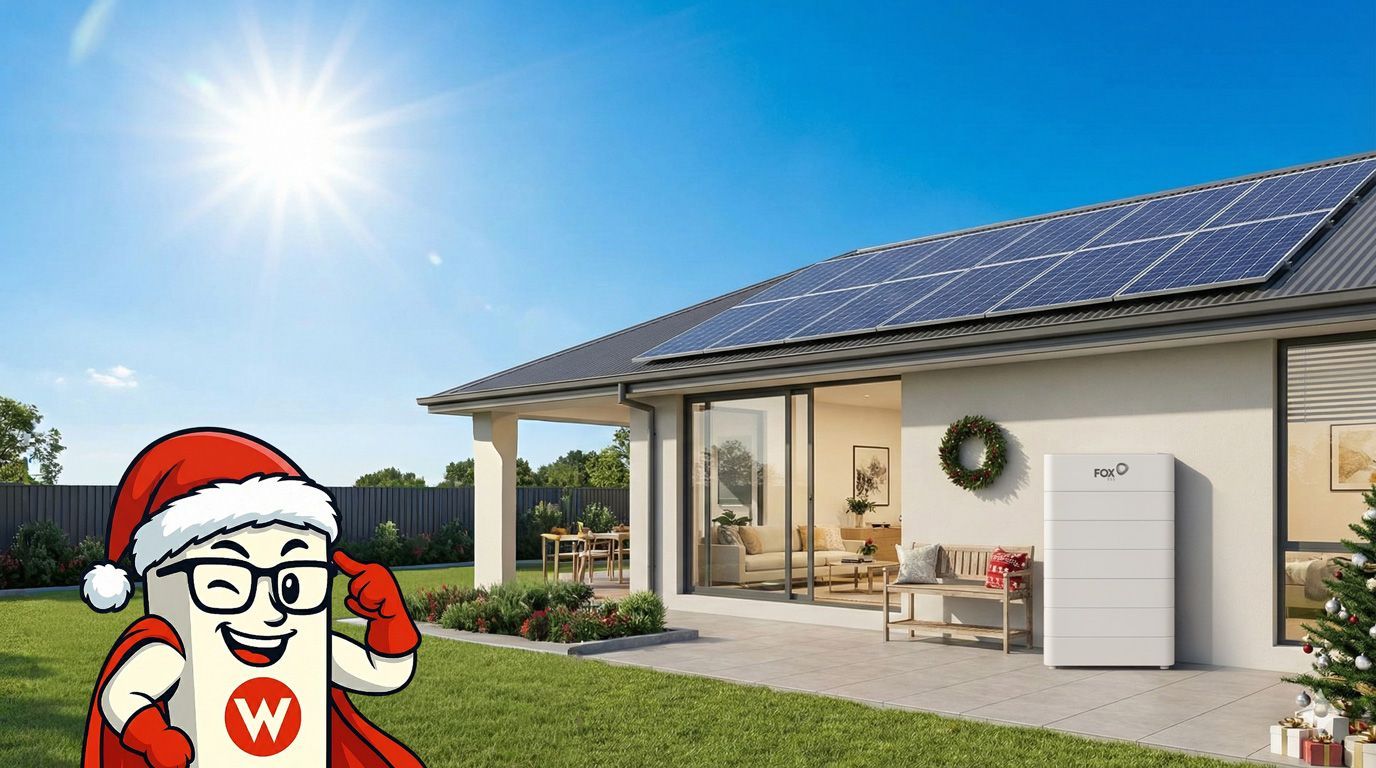AC vs DC Coupling: Which Solar Battery Setup Is Better?
AC vs DC Coupling Explained: Why Most Aussie Homes Choose AC
For homeowners in Australia considering adding battery storage to an existing solar system, the choice often comes down to two architectures: AC-coupled or DC-coupled. While DC-coupling has its merits, for many real-world scenarios, an AC-coupled solution provides stronger value, simpler installation, and more flexibility. Here’s why.
Option 1: Keep Your Existing Inverter and Go AC-Coupled
In the AC-coupling setup:
- Your existing grid-tied inverter continues to convert your solar panels’ DC output into AC for use in the home.
- Excess AC electricity then flows into the hybrid battery inverter, which converts it (again) to DC to charge the battery.
- When needed, the battery discharges into AC household loads via the hybrid inverter.
Big Advantages of AC-Coupling
- Lower disruption & cost-effective upgrade
Because you keep the existing inverter, there is minimal rewiring or removal of your current system. That means fewer installation hours, less complexity, and typically lower upfront cost. - Flexibility & expansion friendly
With AC-coupling you retain your original inverter and have more freedom to mix and match battery brands or hybrid inverters. Future upgrades are easier. - Faster to install
The familiar AC architecture is often streamlined for installer workflows, meaning quicker turnaround and fewer surprises.
Considerations with AC-Coupling
- Because the energy is converted AC → DC for storage and DC → AC for discharge, there is some efficiency loss, often around 5-10%.
- During a grid outage, unless the hybrid inverter offers full backup support, the solar panels may not continue feeding the loads if the grid-tied inverter shuts off.

Option 2: Switch to DC-Coupling (Connect Panels Directly to Battery Inverter)
In a DC-coupled setup:
- Your solar panels are rewired to feed directly into the hybrid storage inverter (DC input).
- The battery is charged directly (DC-to-DC) and the inverter handles AC output to loads.
- During a grid outage, the system can continue generating, charging and supporting loads (assuming the equipment supports islanding).
What’s Great about DC-Coupling
- Potentially higher overall efficiency since you bypass some extra conversion steps—sometimes up to ~98%.
- Stronger true backup capability: solar + battery + loads continue working in an outage.
The Trade-Offs of DC-Coupling
- Often higher upfront cost: rewiring panels, replacing or repositioning the inverter, and perhaps changing layout adds cost (for example roughly +AUD 1,000 or more in some cases).
- Less flexibility if you want to keep your existing inverter for other uses (e.g., time-of-use export optimisation)
- More planning required: panel string lengths, DC cabling runs, system layout (which may trigger rewiring or permit issues).

Why AC-Coupling Often Wins in Real-World Australian Homes
For many homeowners, the best balance of performance, cost and flexibility comes via AC-coupling, particularly in the following scenarios:
- You already have a well-performing grid-tied inverter and don’t want the hassle or cost of replacing it.
- Your main objective is to reduce your household electricity bills, maximise self-consumption and add battery backup—not necessarily full off-grid capability.
- Your budget is defined and you want the most cost-effective pathway to battery storage.
- You may upgrade later: AC-coupling leaves open the option to change hardware again (battery, hybrid inverter) without re-architecting your primary solar inverter.
By choosing AC-coupling, you get a lower-hassle, lower-cost upgrade path, with strong returns—especially when paired with intelligent controls, time-of-use strategies and smart usage of stored energy.
When Might DC-Coupling Be the Better Choice?
It still makes sense to go DC-coupled if your priorities include:
- Full backup power during grid outages (solar generation continues, battery charges and loads remain powered).
- You are already planning a major overhaul of your solar system (panel layout changes, new inverter anyway) so you’ll take the installation cost hit.
- You’re targeting maximum efficiency and minimal conversion losses are a big deal to you.
Our Recommendation for Aussie Solar Homeowners
If you’re upgrading to a battery and you already have a working solar inverter, we recommend starting with an AC-coupled architecture. It’s the smart choice for most homes because it:
- Minimises disruption and cost
- Delivers the core benefits of battery storage (lower bills, better self-consumption)
- Keeps your options open for future upgrades
Focus your investment on:
- A robust hybrid inverter with modern features (export control, smart load management, off-peak charge)
- A high-quality lithium-ion battery (from trusted brands)
- Good system layout and installer workmanship
- Smart usage of the battery (timing discharge with peak tariffs, shifting load to stored energy)
Once that’s in place, if you later decide you want full backup capability or want to replace your main inverter anyway, you can always migrate to a DC-coupled solution.




